VENEZUELA
Plants and Animals

Plants and Animals

Cities in VENEZUELA
| Caracas |
Popular destinations VENEZUELA
| Isla margarita |
Plants and Animals
Plants
The German Alexander von Humboldt (1767-1835) and the French botanist Aimé Bonpland (1773-1858) were the first to study the overwhelming plant and animal world of Venezuela. Many more came after them and still the entire flora and fauna has not been mapped.
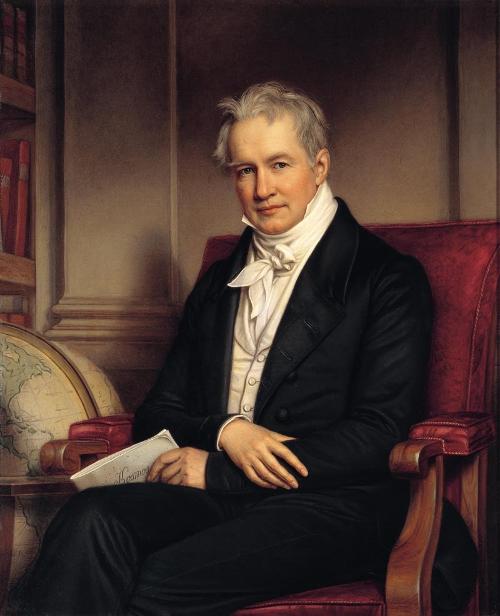 Alexander von Humboldt, VenezuelaPhoto: Public domain
Alexander von Humboldt, VenezuelaPhoto: Public domain
In areas with a long dry period (approx. 10 months dry), thorny shrub vegetation is mainly found up to about five meters high, with peaks of up to ten meters. There are areas with many open spaces between the bushes and cacti, but there are also impenetrable thorn bushes. Typical for this vegetation are different acasia species including the “cují torcido” and some Caesalpinaceae including the “yabo” and the “dividive”. Furthermore, the “guamache”, a tall tree-forming cactus and the “cardón”, which can grow up to ten meters high, grow here.
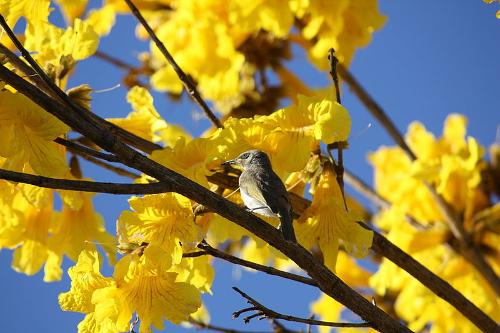 Trumpet tree, national tree of VenezuelaPhoto: Jan Smith CC 2.0 Generic no changes made
Trumpet tree, national tree of VenezuelaPhoto: Jan Smith CC 2.0 Generic no changes made
The very dry tropical forest occurs in less dry locations (approx. 7 months dry) with twice as much rainfall. The trees here are already a bit higher, including the national tree of Venezuela, the "araguaney" (trumpet tree). Other trees are the yellow flowering “curari” and the “vera”. Both of these types of drought forest were and are still used for grazing sheep and goats, which also cause enormous erosion. Dry tropical forests (dry for about 4 months) are common and the annual rainfall varies between 900 and 2600 mm. The trees have a sturdy trunk with a low, very broad crown. The trees can grow up to forty meters in height, especially in the western Llanos. Very common is the "carocaro" with its umbrella-shaped crown. Gallery forests are found along the rivers, remnants of large forest areas that have been burned down over the centuries. The national tree of Venezuela is the guayacan.
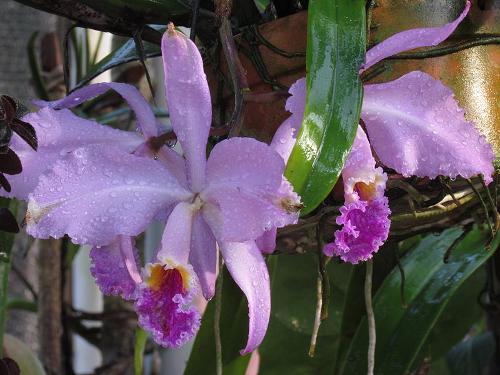 Cattleya mossiae, VenezuelaPhoto: Wilfredor CC 3.0 Unported no changes made
Cattleya mossiae, VenezuelaPhoto: Wilfredor CC 3.0 Unported no changes made
The moist tropical forests (dry for about one month) or tropical rainforests are always green and there is between 1700 and 3800 mm of precipitation annually. The trees here grow very high, more than forty meters. These trees often have a small crown, which is necessary to receive a lot of light and to be able to grow quickly. Lianas and climbing plants such as the philodendron are also abundant in the dark jungles for this reason. Plants with large leaves such as dwarf palms and diefenbachias grow on the bottom of the jungle.
The páramo is located above the tree line, from approx. 2800 meters. Moss, grasses, orchids and low shrubs grow here. There are plant species on the table mountains, especially some carnivorous ones, which are found nowhere else in the world. The Guayana Highlands are characterized by wet summers and dry winters and are largely covered with dense forests.
The nature of Venezuela is home to an unimaginably large amount of plants and flowers. For example, it is suspected that there are about 3000 species of orchids alone. The national flower of Venezuela is the orchid Cattleya mossiae. The cocoa plant is the best known of the cultivated plant species.
Animals
Many cormorants, pelicans and frigate birds live in the nature reserves of the Caribbean islands. Here we also find pink spoonbills, flamingos and red ibises. Parque Nacional Los Roques is home to 57 types of coral and numerous colorful fish. The rare green turtle and the hawksbill turtle still find food here. All kinds of seabirds such as brown boobies, red-footed boobies, shearwaters and the special red-billed tropic birds can be seen here. Apart from iguana's, large herbivorous lizards, there are no land animals. The only mammal is the fishing bat. The national bird of Venezuela is the orange or Venezuela troupial.
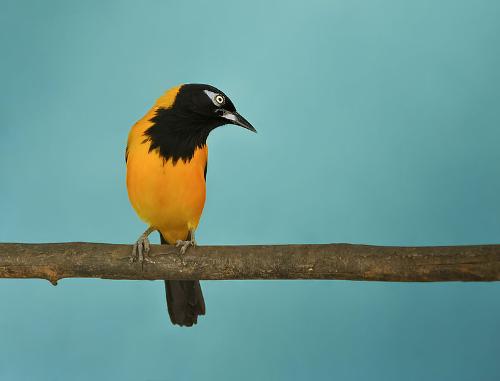 Troupial VenezuelaPhoto: Paolo Costa Baldi CC 3.0 Unported no changes made
Troupial VenezuelaPhoto: Paolo Costa Baldi CC 3.0 Unported no changes made
There are several national parks in the northeast. In the Parque Nacional Paria lives, among other things, the special Venezuelan hook-billed tangara and a special otter species that only occurs here. In the Parque Nacional El Guácharos lives a large colony of oil birds, nocturnal birds equipped with sonar, just like bats. In the delta Amacuro lies the Parque Nacional Mariusa and there are many water birds such as herons and red ibises in the swamp forests. Piranhas, small caimans and freshwater dolphins live in the nutrient-rich water. The jungle is home to various species of parrots, blue and yellow macaws, toucans, gray capuchin monkeys, bushy-tailed monkeys and red howler monkeys.
In the central north lies the Parque Nacional El Avila where sloths, squirrels, howler monkeys, as well as various types of poisonous snakes such as the cascabel and the pit viper live there. The Parque Nacional Guatopo near the capital Caracas is home to large mammals such as pecari, jaguar, puma and tapir. The first national park in Venezuela, Parque Nacional Henri Pittier is also located here. More than 40 percent of the Venezuelan bird and mammal world is found here. By the way, Venezuela has more than 1,300 bird species in its territory, more than Europe and North America combined.
In the northwest lies the Parque Nacional Terepaima with a drought vegetation and wat higher situated cloud forest. Howler monkeys, capuchin monkeys and anteaters live here. The Parque Nacional Sierra de Perijá is very difficult to access. Here the king vulture lives and mammals including howler monkeys, capuchin monkeys, spectacled bears, porcupines and anteaters.
The swamps, creeks, lakes and rivers of the low Llanos are home to piranhas, stingrays, electric eels and freshwater dolphins. Many species of wading birds and marsh birds find sufficient food here. Special birds are the roseate spoonbill, and the fish-eating wood stork and the jabiroe. In the lower trees lives the hoatzin, a primitive bird with poor flying ability.
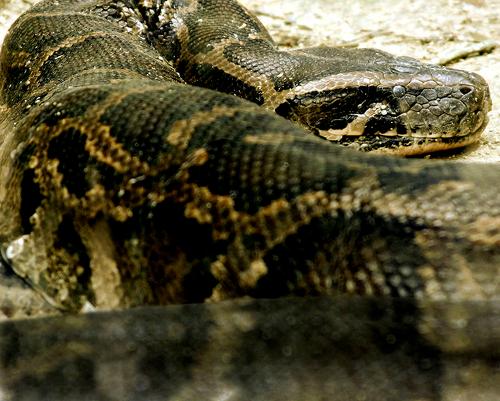 Anaconda, VenezuelaPhoto: HumbRios CC 3.0 Unported no changes made
Anaconda, VenezuelaPhoto: HumbRios CC 3.0 Unported no changes made
The anaconda, a large choke snake, is also found here. Iguanas, rattlesnakes, coral snakes, the rare giant anteater and the capybara, the world's largest rodent, also live here. In the Parque Nacional Aguaro-Guariquito special animals live such as the giant anteater, the giant armadillo and also jaguars, pumas and ocelots. The Cinaruco-Capanaparo National Park was not established until 1988. About 320 species of birds, many fish species and about 70 species of reptiles live there. Special are the almost extinct Orinoco crocodile and Orinoco turtle and the giant otter and giant armadillo.
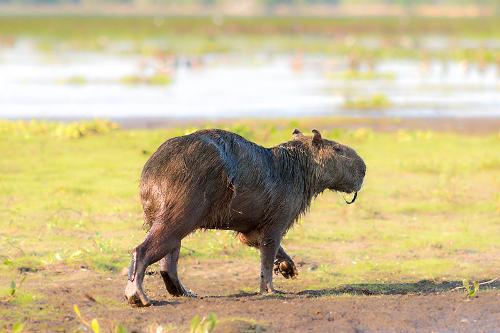 Capybara, VenezuelaPhoto: Fernando Flores CC 2.0 Generic no changes made
Capybara, VenezuelaPhoto: Fernando Flores CC 2.0 Generic no changes made
In the state of Bolívar lies the Parque Nacional Canaima, an area the size of the Netherlands with its impressive table mountains. The soil is poor in nutrients and therefore few large animals live in this area. There is not much more to see than birds and lizards. There are jaguars, ocelots and tapirs, but these are hardly visible. Special birds are the goldcrest, the remarkable white gong bird, tangaras and manakins.
The state of Amazonas consists of 90% jungle, 5% savanna and 5% other vegetation. About 675 species of birds and 60 species of amphibians live there. Furthermore, about 50 species of snakes, 190 species of mammals, 25 species of lizards, 4 species of crocodiles and 15 species of turtles. It is noteworthy that there are many species of animals, but that the numbers are not very large due to the food poverty that is characteristic of this area. Mammals include 90 species of bats, 30 species of rodents, 12 species of monkeys, 12 species of mustelids, 16 species of predators and sloths, anteaters, deer, tapirs and pecaries. Anglers from around the world are angling for the pavón, a large striped bass, catfish, payaras and piranhas.
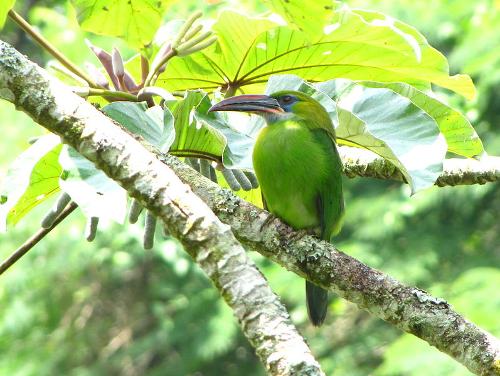 Green Toucan, VenezuelaPhoto: Cristóbal Alvarado Minic CC 2.0 Generic no changes made
Green Toucan, VenezuelaPhoto: Cristóbal Alvarado Minic CC 2.0 Generic no changes made
Dinira National Park is located in the Andes. Characteristic animals here include cougar, margay, anteater, armadillo, water possum and bush grouse. Characteristic animals of the Parque Nacional Sierra de la Culata are the spectacled bear, roller-tail bear, condor, green-yellow jay and jaguar. The Parque Nacional Sierra Nevada is mainly a bird area with condor, snipe, paramo duck, lyre-tailed nightjar, long-billed hummingbird, crested quetzal and the green toucan.
30,000 species of insects have been observed in Venezuela, of which butterflies are a large part. There are species with a wingspan of up to 15 cm. Venezuela had 43 national parks and 22 “monumentos naturals” in 1997, consisting of e.g. one mountain or one cave. In total they cover about 15% of the total land area.
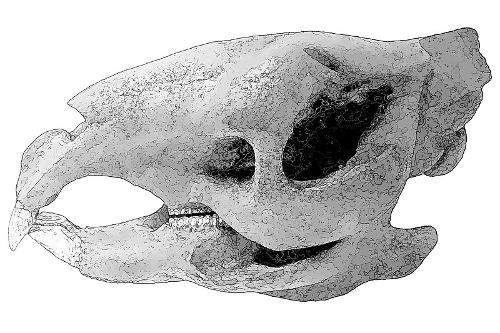 Phoberomys Pattersoni VenezuelaPhoto: A C Tatarinov in the public domain
Phoberomys Pattersoni VenezuelaPhoto: A C Tatarinov in the public domain
In September 2003, paleontologists found the remains of an extinct giant guinea pig called Phoberomys pattersoni, which was the size of a cow and must have weighed more than 700 kilograms. In 2000, the researchers excavated a nearly complete skeleton and intact skull of the animal from the sediments of the Urumaco formation, an area 400 kilometers west of the capital, Caracas.
Sources
Dydyñski, K. / Venezuela
Lonely Planet
Ferguson, J. / Venezuela : mensen, politiek, economie, cultuur
Novib
Launspach, W. / Reishandboek Venezuela, Margarita
Elmar
Morrison, M. / Venezuela
Chelsea House Publishers
O’Bryan, L. / Venezuela, Isla Margarita
Gottmer
CIA - World Factbook
BBC - Country Profiles
Copyright: Team The World of Info